In the arrangement shown in figure, the string has a mass of 4.5 g. How much time will it take for a transverse disturbance produced at the floor to reach the pulley ? Take g=10ms−2
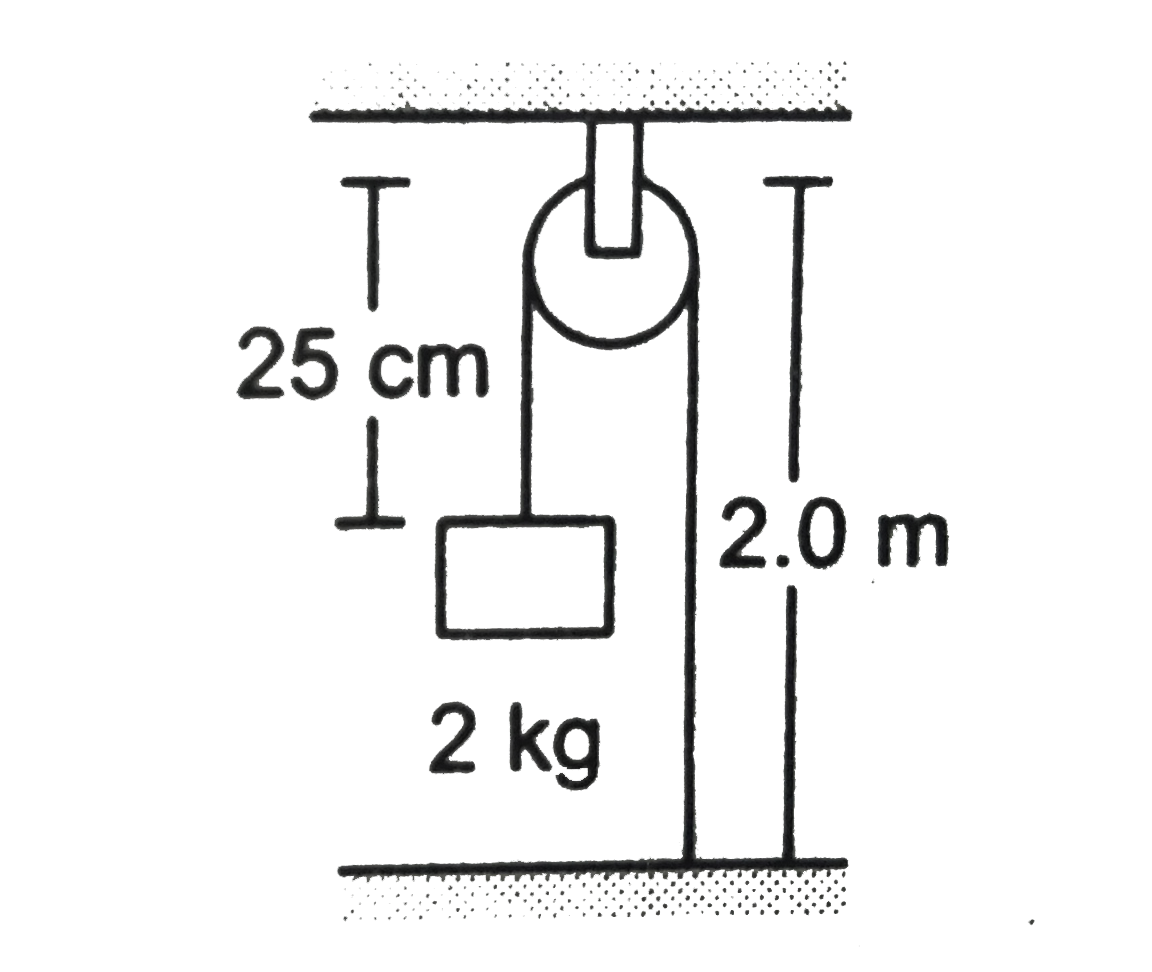 .Solution in Gujrati
.Solution in Gujrati
The correct Answer is:0.02s
v=√Tμ=
⎷2×104.5×10−32.25=100m/s
t=Lv=2100=0.02sec
Topper's Solved these Questions
- WAVES AND OSCILLATIONSBOOK - ALLEN CHAPTER - WAVES AND OSCILLATIONSEXERCISE - Part-1(Exercise-04)[B]
13 Videos
- WAVES AND OSCILLATIONSBOOK - ALLEN CHAPTER - WAVES AND OSCILLATIONSEXERCISE - Part-1(Exercise-05)[A]
28 Videos
- WAVES AND OSCILLATIONSBOOK - ALLEN CHAPTER - WAVES AND OSCILLATIONSEXERCISE - Part-1(Exercise-03)
31 Videos
- SEMICONDUCTORSBOOK - ALLEN CHAPTER - SEMICONDUCTORSEXERCISE - Part-3(Exercise-4)
50 Videos
Similar Questions
A source of sound is moving along a circular orbit of radius 3meter with an angular velocity of 10rad/s. A sound detector located far away from the source is executing linear simple harmonic motion along the line BD with an amplitude BC=CD=6meters. The frequency of oscillation of the detector is 5π per second. The source is at the point A when the detector is at the point B. If the source emits a continuous sound wave of frequency 340Hz, Find the maximum and the minimum frequencies recorded by the detector.
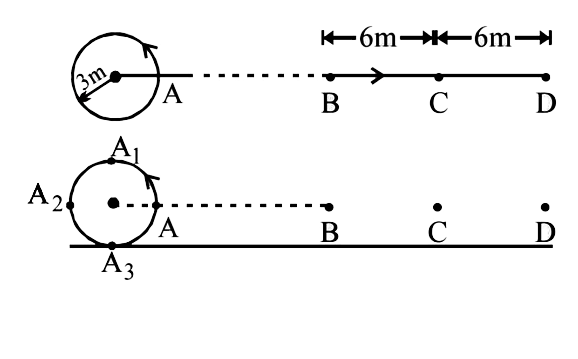
View SolutionTube A has both ends open while tube B has one closed, otherwise they are identical. The ratio of fundamental frequency of tube AandB is
View SolutionStatement-1 : Sound travels faster in moist air
Statement-2 : The density of moist air is less then density of dry air.
View SolutionAt absolute zero temperature Si acts as ……..
View SolutionCalculate the tension in the string shown in figure. The pulley and the string are light and all surfaces are frictionless. Take g=10 m/s2.
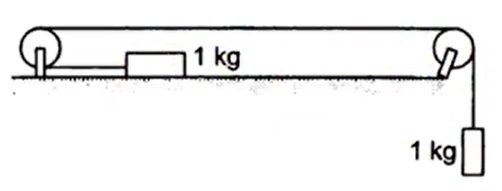
View SolutionA 100 cm long wire of mass 40 g supports a mass of 1.6 kg as shown in figure . Find the fundamental frequency of the portion of the string between the wall and the pulley. Take g=10m/s2.
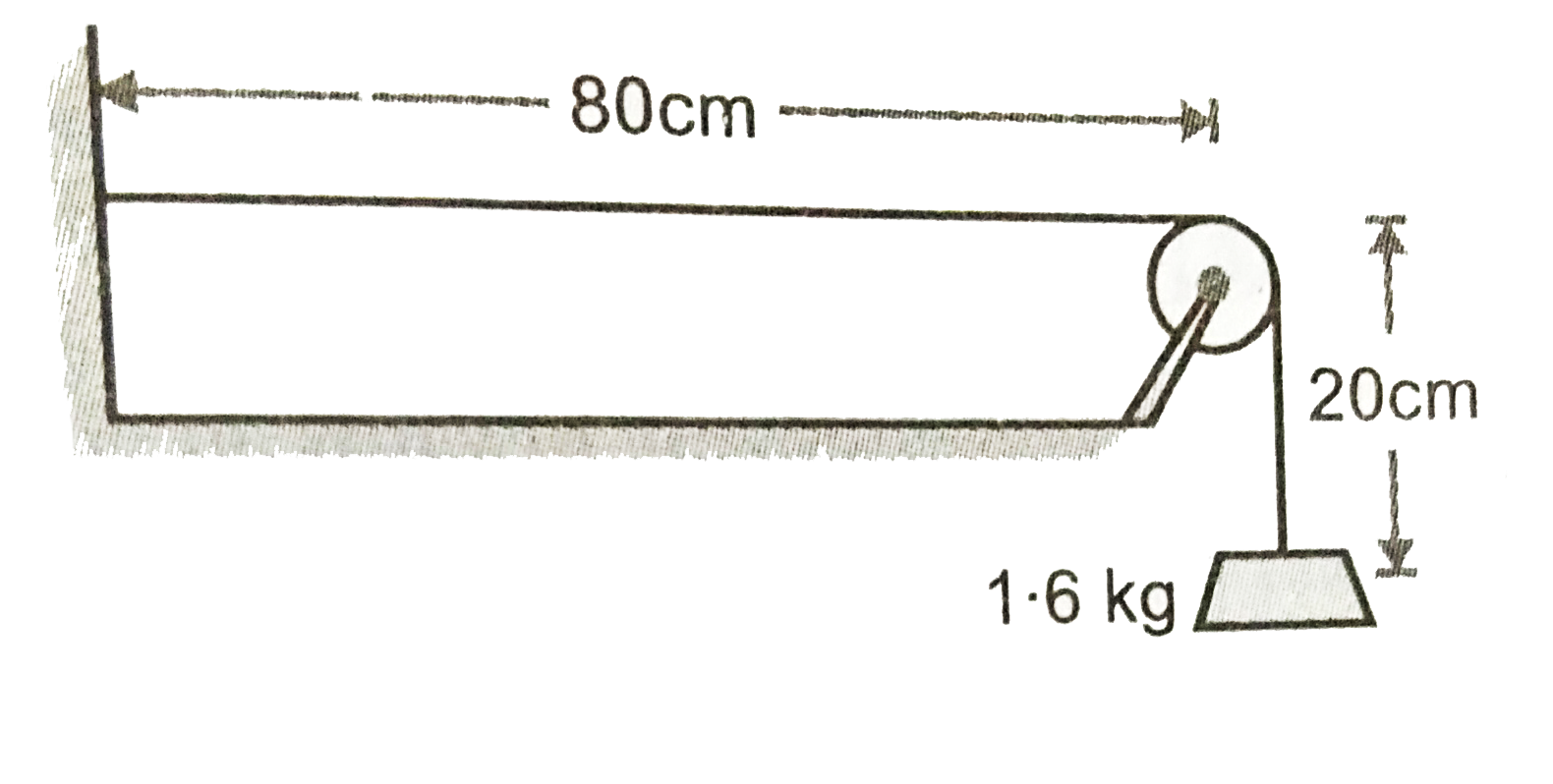
View SolutionThree equal weights of mass 3 kg each are hanging on a string passing over a fixed pulley as shown in figure-2.147. The tension in the string connecting weight B and C is : (Take g = 10m//s^(2) )
View SolutionThe elevator is going up with an acceleration of g/10 the pulley and the string are light and the pulley is smooth. If reading of spring balance shown is 0.8x Calculate x. (Take g=10m/s2)
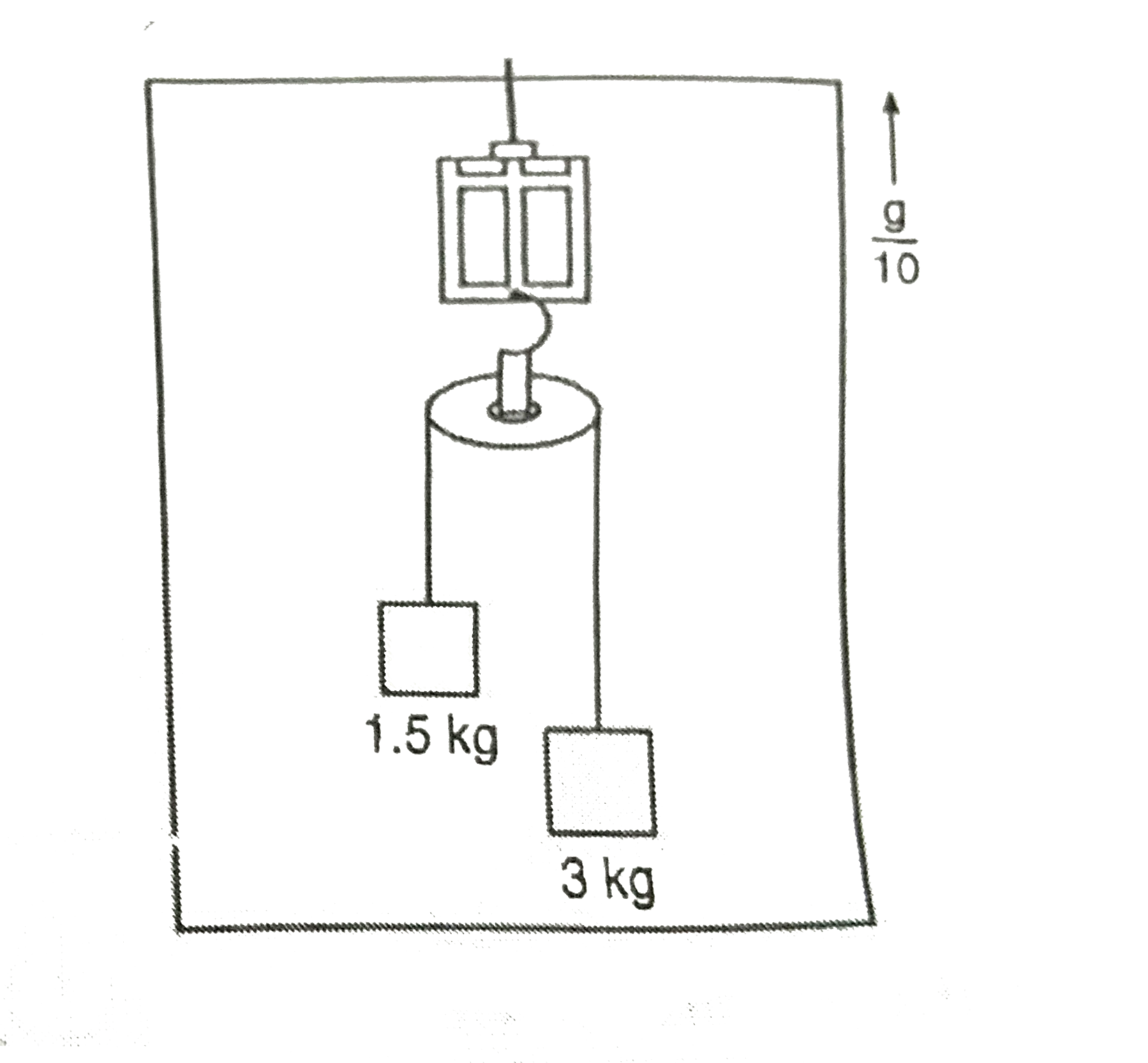
View SolutionA 50cm long wire of mass 20g supports a mass of 1.6kg as shown in figure. Find the first overtone frequency of the portion of the string between the wall and the pulley. Take g=10m/s2
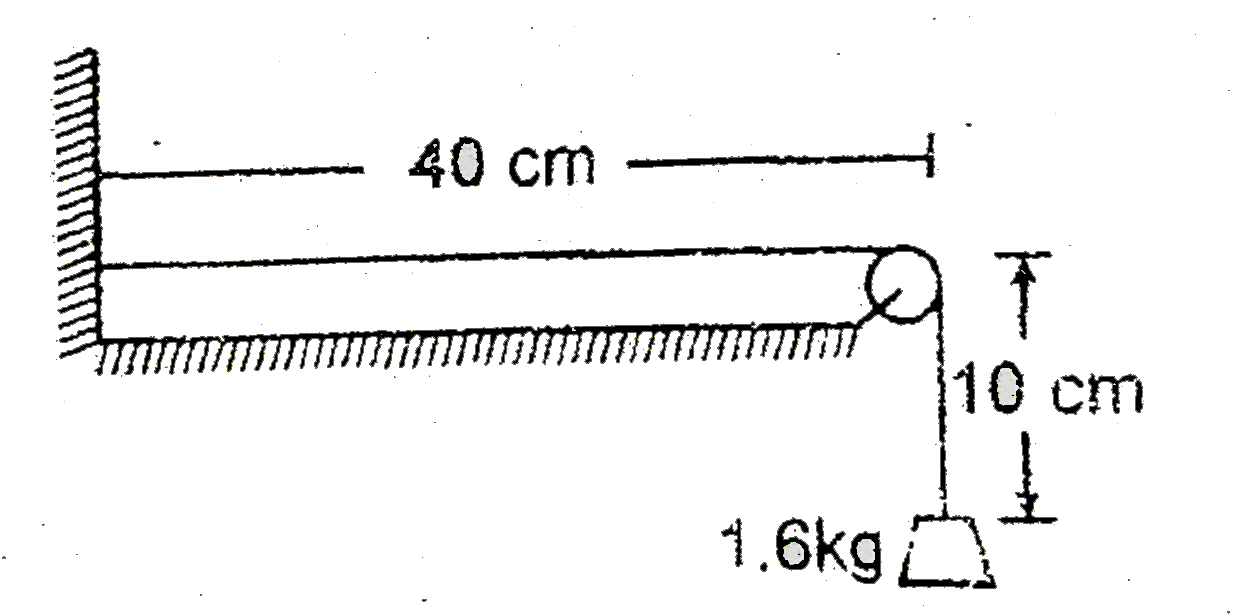
View Solutionचित्र में 2 kg का एक ब्लॉक एक चिकनी घिरनी पर से जाती डोरी द्वारा फर्श से जुड़ा है । डोरी का द्रव्यमान 4.5g है तथा लंबाई 2.25m है (घिरनी का व्यास बहुत छोटा है )। डोरी में फर्श के पास उत्पन्न किए गए तरंगिका को घिरनी तक पहुँचने में कितना समय लगेगा ?

View SolutionA string of mass 0.250 kg is under a tension of 2 N. The length of the stretched string is 2 m. A transverse wave disturbance starts at one end of the string . How long will the disturbance take to reach the other end ?
View SolutionIn the figure shown,assuming the horizontal surface to be smooth and (g=10ms^(-2)) ,if the pulleys and the strings connecting are ideal,then acceleration of the block (3.0Kg)" is
View SolutionIn figure, the string has a mass of 14 kg. How much time will it take for a transverse disturbance produced at fixed support to reach the pulley?
View SolutionFind the tension in the horizontal string PQ and the string QR in the given figure. [Take g=10m//s^(2) ]
View SolutionConsider the system shown in figure. The pulley and the string are light and all the surface are frictionless. The tension in the string is ("Take g" = 10 m//s^(2))
View SolutionThe force excreted by string on the pulley is (g=10ms^(-2))
View Solution
